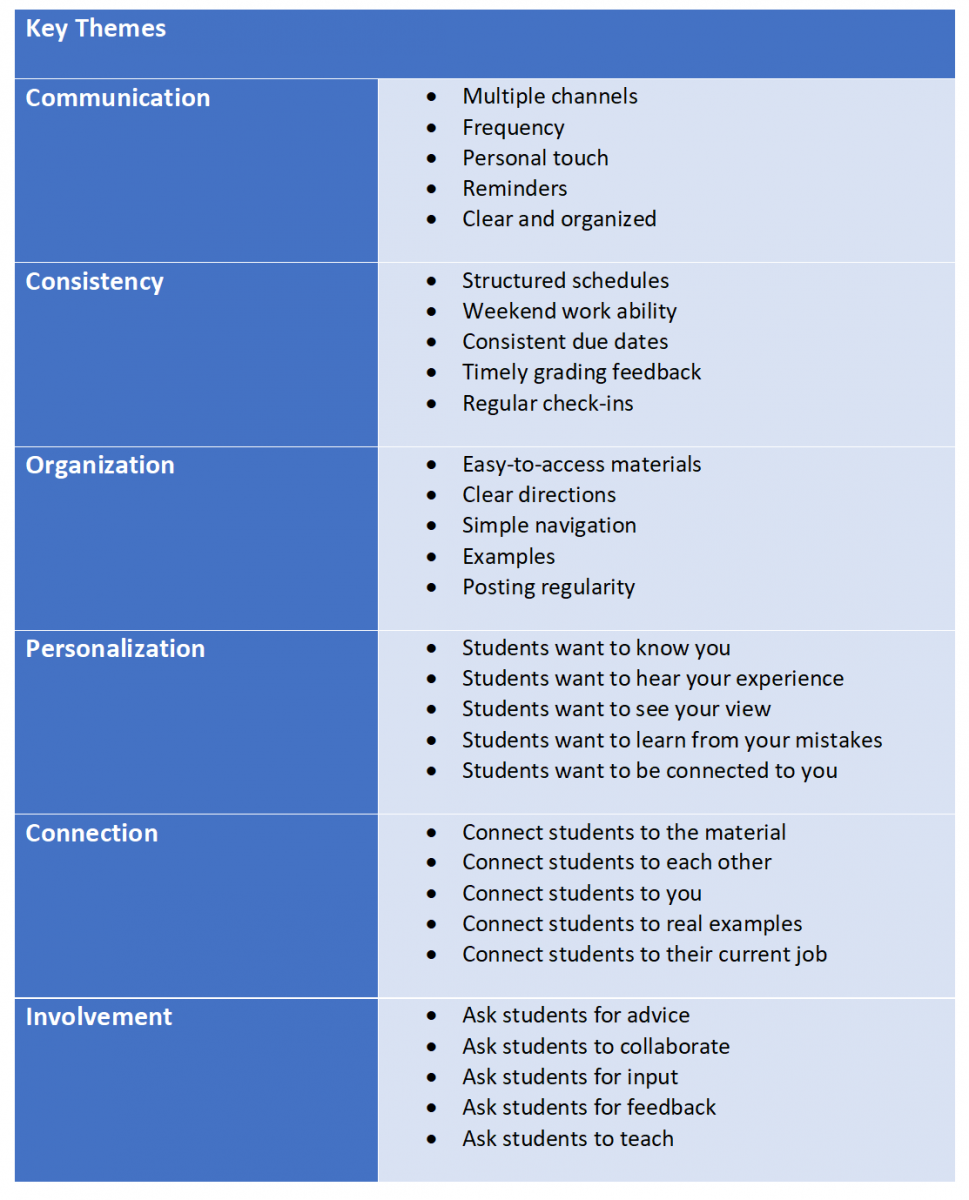Learn about the fundamentals of online teaching.
Teaching online is much more than just taking your face-to-face class materials and putting them online. You should reconsider how you design and deliver your course to achieve course objectives. Online teaching is a shift away from teacher-centered instruction to more interactive, student-centered instruction. The instructor’s role also changes from the “sage on the stage” to the “guide on the side”.
Synchronous Online vs. Asynchronous Online vs. StevensFlex (Hybrid)
With different delivery modes, online learning can be designed, developed, and delivered in various ways. Each delivery mode has its pros and cons for both faculty and students. Please note that each Stevens school or college has its own policy regarding offering asynchronous classes; please consult your school or college for information.
Synchronous Online
Synchronous online classes are those that require students and instructors to be online at the same time. All students must be online at a specific hour in order to participate. One example of synchronous online delivery is teaching via Zoom.
Asynchronous Online
Asynchronous classes do not require students and instructors to be present at a specific time. Instructors provide students with materials and lectures that can be accessed at any time, as long as they are completed by the designated deadline. Examples of instructional materials frequently used in asynchronous instruction include pre-recorded video lectures and discussion forums.

Figure: Comparison of Synchronous Online and Asynchronous Online
StevensFlex (Hybrid)
StevensFlex classes meet in a physical location on campus at a scheduled time, with some students attending class in-person while others join virtually via Zoom from a remote location.
What Online Students Expect
One of the first things to understand is what online students expect. In this Magna Publications 20-Minute Mentor video (Length: 20:52), Jill Scheifelbein leads us through the six key themes that

Figure: Six Key Themes that Faculty Should Pay Attention to When Designing and Delivering Their Online Courses
How to Be a Better Online Teacher
Popular author of “Small Teachings Online” (a follow-up to the extremely popular "Small Teachings" by James Lang) Flower Darby brings us a robust Advice Guide on how to be a better online teacher, published in The Chronicle of Higher Education.
10 Essential Principles and Practices
Be present and interact with your students regularly. A few things you can do include posting a weekly announcement, holding online office hours, and responding to student posts on discussion boards in Canvas.
- Humanize your teaching. Your students want to know you as a person. They want to know your personality, teaching style, and interests.
- Envision how your students are experiencing the online class. Online students are physically separated from you and other students. Consider their challenging circumstances and isolation in your course design.
- Make your course content accessible and easy to navigate. Students will be confused and frustrated if it is hard to access course materials.
- Add visual appeal such as images and graphics to enhance course appearance, which affects student engagement. Note: All visuals should be accessible to all students.
- Clearly explain expectations to your students so that students don't have to guess what you want them to do.
- Scaffold learning activities to help student successfully complete their activities and assignments.
- Teach with examples. Examples are effective and powerful ways to help students better understand and deepen student learning.
- Create an inviting online learning environment where students feel welcome. Research shows that the learning environment has a direct impact on learning outcomes.
- Always reflect what worked well and what didn’t in your course and commit to continuous improvement. Even small efforts can have a big impact.
All these points and more are explained in this article.
Supplemental Resources
References
- Darby, Flower. (2019). How to be a better online teacher. The Chronicle of Higher Education.
Content created by
Valerie Dumova and Wei Li, Office of Learning Technology
Jeniffer Obando, WebCampus
Experiencing an issue or need additional support? Contact our OneIT Team by